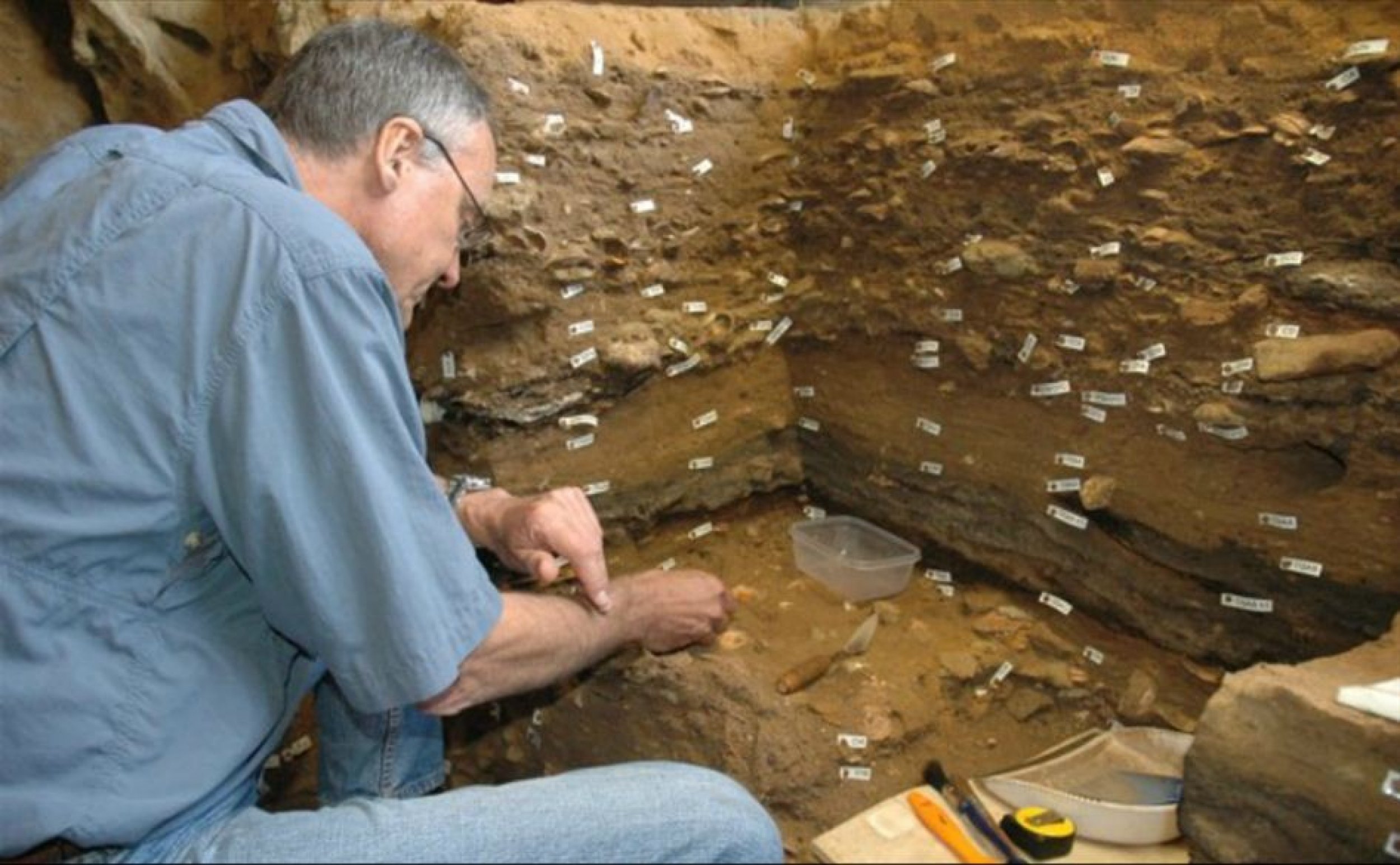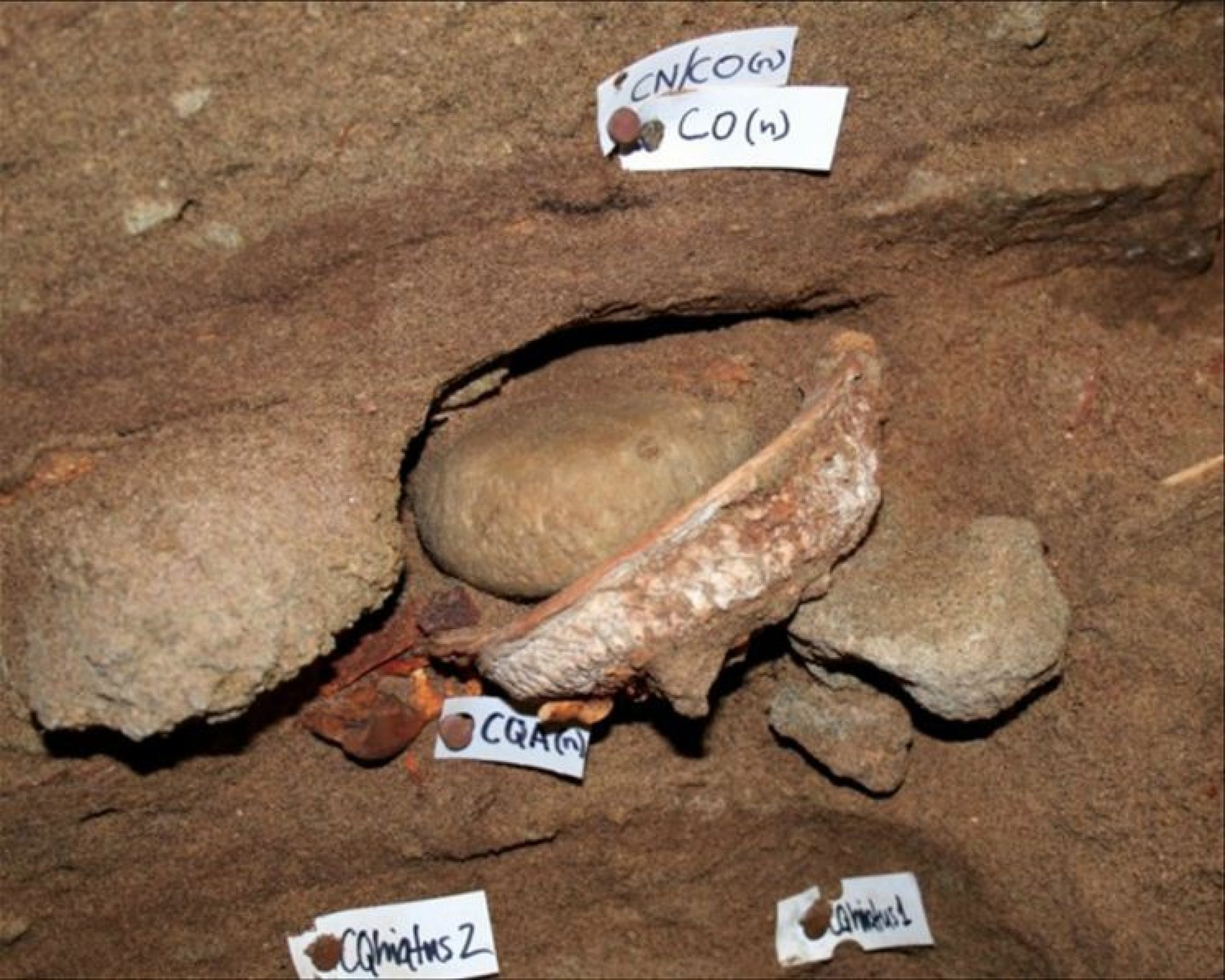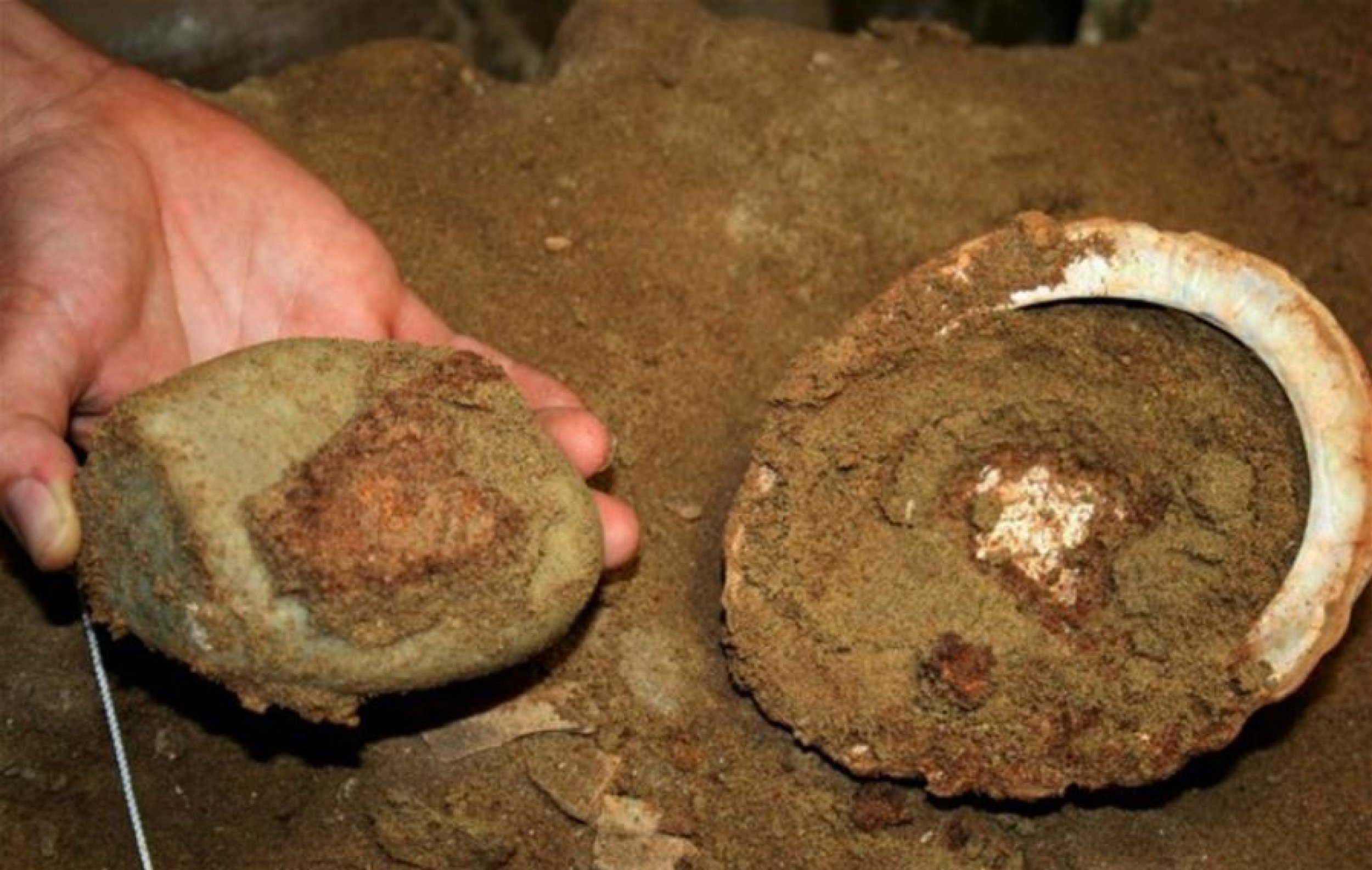A 100000-Year-Old Workshop in African Cave Depicts Evolution of Human Thinking (Photos)
Researchers have discovered a 100,000-year-old workshop in South Africa, which may have been used by early Homo sapiens in order to make, mix and also to stock up ochre - the most primitive form of paint.
Until now, it has been believed that ochre, which is essentially just colorful dirt, was used some 60,000 years ago. But the recent findings indicate that early humans were not only using ochre, but also producing and storing it much earlier than that.
In 2008, Professor Christopher Henshilwood from the University of Bergen in Norway and University of the Witwatersrand in South Africa along with an international team of colleagues unearthed the ancient art studio in South Africa's Blombos Cave, about 300 kilometers east of Cape Town. The cave was found littered with hammers and grindstones for making ochre powder.
The findings of the study, appeared in the Friday, Oct. 14, issue of the journal Science, also include two abalone shells that had once been used to store a red, ochre-rich mixture that was combined with bone and charcoal.
We waited three years before publishing to make sure the analysis was right, said Henshilwood in a statement. I think we've established rather accurately that the reported contents of the shells are correct.
The two ochre-processing toolkits were found 16 centimeters apart in the same layer. The researchers reported that both the shells were chunks of ochre-stained quartzite rock, seemed to be used to grind the mixture. Researchers also found part of the forearm bone of possibly a wolf or fox in one of the shells, which they believe might have been used to mix the paint or remove it out of the shell.
Why Did They Use the Paint?
According to researchers, the two shells appear to be components of an ochre workshop. However, any solid evidence that the pigment was used in artistic or other symbolic communication has been lacking.
Henshilwood and his colleagues suggested that it might have been used for decorating skin or clothing or for protecting the skin, since ochre is known to keep away mosquitoes and other insects. They snubbed the suggestion that the material might have been used as glue to haft stone tools into handles because a key ingredient in such adhesives - resin or wax - was not present in the shells.
A Critical Point in the Evolution of Human Thinking
The researchers said the conceptual ability to mix and store substances such as ochre signified a critical point in the evolution of human thinking. The discovery revealed aspects of modern behavior, for instance, advance planning and an elementary knowledge of chemistry, they said.
It shows that these people had the capacity for forward and deliberate planning, and it suggests they also had a basic understanding of chemistry - that things could be combined together to reach an end result, said Henshilwood.
The findings at the Blombos Cave revealed the cognitive skills of early Homo sapiens in Africa before they left for Asia around 60,000 to 80,000 years ago, he added.





© Copyright IBTimes 2024. All rights reserved.






















